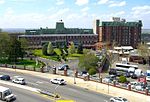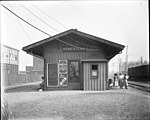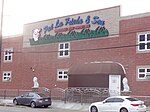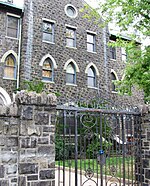North River Tunnels

The North River Tunnels are a pair of rail tunnels that carry Amtrak and New Jersey Transit passenger lines under the Hudson River between Weehawken, New Jersey, and Pennsylvania Station in Manhattan, New York City, New York. Built between 1904 and 1908 by the Pennsylvania Railroad (PRR) to allow its trains to reach Manhattan, they opened for service in late 1910. The tunnels allow a maximum of 24 crossings per hour each way and operate near capacity during peak hours. The tunnels were damaged by flooding in 2012, causing frequent delays in train operations. In May 2014, Amtrak stated that within 20 years one or both of the tunnels would have to be shut down. In May 2021, the U.S. Department of Transportation (USDOT) approved construction of two new tunnels. The new tunnels are scheduled to open in 2035, with rehabilitation of the old tunnels completed by 2038.
Excerpt from the Wikipedia article North River Tunnels (License: CC BY-SA 3.0, Authors, Images).North River Tunnels
Paterson Plank Road,
Geographical coordinates (GPS) Address Nearby Places Show on map
Geographical coordinates (GPS)
| Latitude | Longitude |
|---|---|
| N 40.7714 ° | E -74.0419 ° |
Address
Paterson Plank Road 1899
07047
New Jersey, United States
Open on Google Maps









